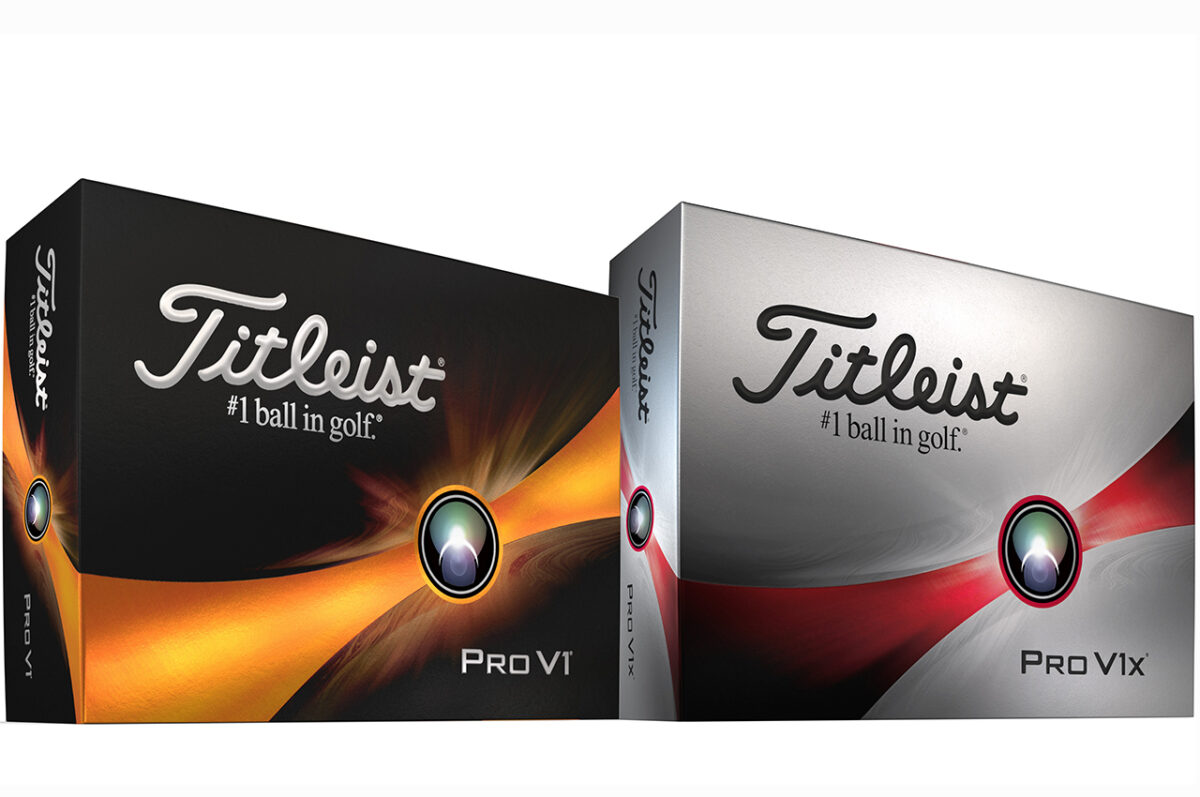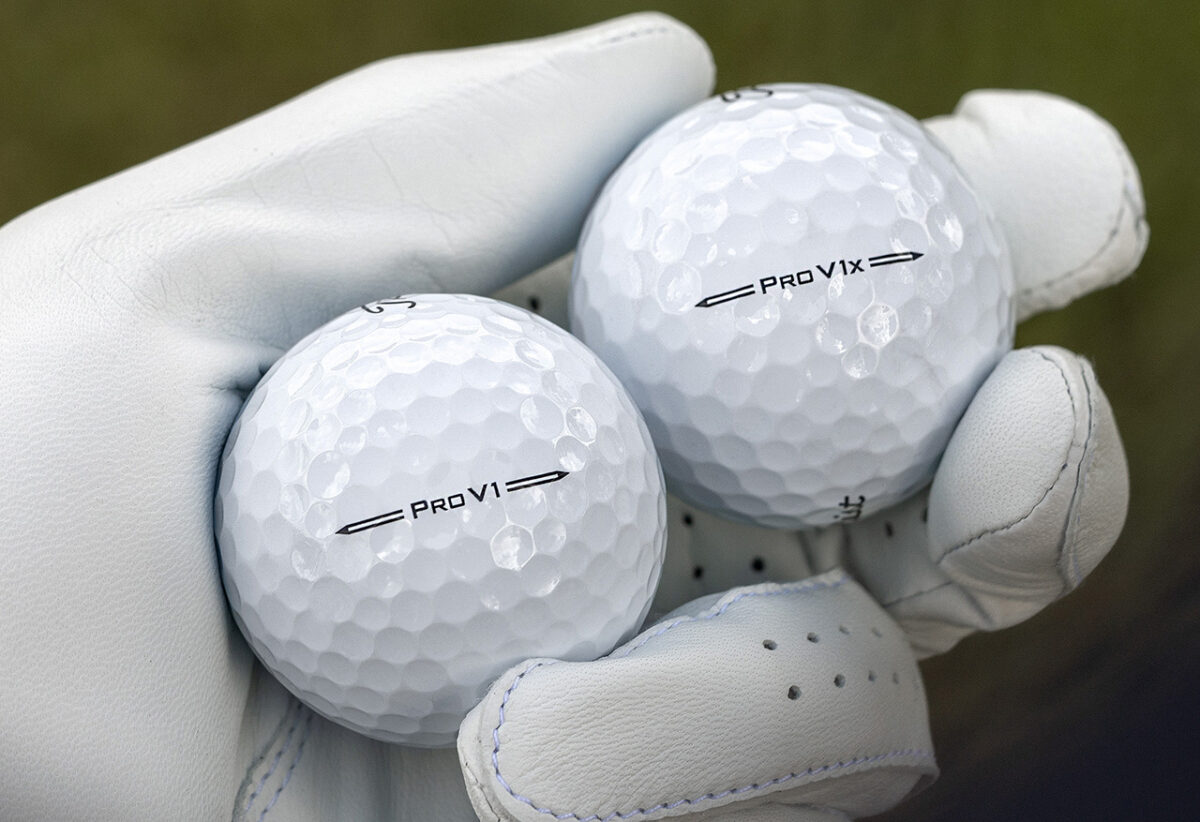Gear: Titleist Pro V1, Pro V1x (2023)
Price: $54.99 per dozen
Specs: Three-piece construction with cast urethane cover (Pro V1); Four-piece, dual-core construction with cast urethane cover (Pro V1x)
Available: Jan. 25
Who They’re For: Golfers who want more distance off the tee and from the fairway with the maximum level of short-game spin.
The Skinny: The 2023 Pro V1 and Pro V1x retain their soft urethane covers and greenside spin, and now each has a high-gradient core designed to boost long-game distance.
The Deep Dive: Titleist ran the table in 2022 at the men’s majors, with Scottie Scheffler (Masters), Justin Thomas (PGA Championship), Matt Fitzpatrick (U.S. Open) and Cameron Smith (British Open) each winning with a Pro V1 or Pro V1x ball.
For 2023, Titleist is releasing updates to the Pro V1 and Pro V1x, the most-played golf balls on the PGA Tour, DP World Tour, LPGA, NCAA Championships and every major amateur championship. The Pro V1 remains a three-piece ball with a large core inside a casing layer covered with a 388-dimple cast thermostat cover. The Pro V1x remains a four-piece ball with a dual-core design inside the casing layer and a urethane cover. The most significant change to the balls is how the cores are designed.
For 2023 the Pro V1 and Pro V1x have a high-gradient core designed to be soft in the center and grow progressively firmer toward the perimeter.

Titleist made the core of the Pro V1x Left Dash and 2021’s limited-release Pro V1 Left Dot with high-gradient core technology without calling attention to it. After listening to player feedback and tweaking the design, the brand decided to add it to the Pro V1 and Pro V1x this season.
Titleist said a large differential between the rigid outer portion of the core and the soft inner area produces less spin on long-game shots because it transfers more energy, more efficiently, to the inner portion of the core.
In other words, the gradient core allows for more energy created by your swing to become forward thrust on long-iron, hybrid, fairway wood and driver shots instead of creating spin. However, because the soft cover of the Pro V1 and Pro V1x is easily pinched between the face of your wedge and the stiff casing layer, golfers can generate greenside spin on slower-swinging short-game shots.

In the dual-core Pro V1x, the inner core’s volume was increased 44 percent, and now it has a gradient core. The outer core, which is slightly thinner, was made marginally firmer.
In a higher-compression ball such as the Pro V1x, more spin is typically created with longer clubs, but using two cores creates a hardness gradient that allows for more speed. The new gradient core amplifies that effect, so the 2023 Pro V1x retains its firmer feel but can now deliver more speed.
While Titleist is not touting that the updated Pro V1 and Pro V1x feel softer because of the gradient cores, PGA Tour reps did hear that as a comment from some players during the seeding process in the fall.
In addition to providing more distance off the tee and with long clubs, Titleist said that in testing the 2023 Pro V1 and Pro V1x created tighter dispersion because overall spin is reduced, so the effect of hooks, slices and wind are diminished.
The relationship between the two balls has not changed with the update. The 2023 Pro V1x should fly slightly higher and generate slightly more spin than the Pro V1, while the Pro V1 will still feel softer.
[listicle id=778165754]








